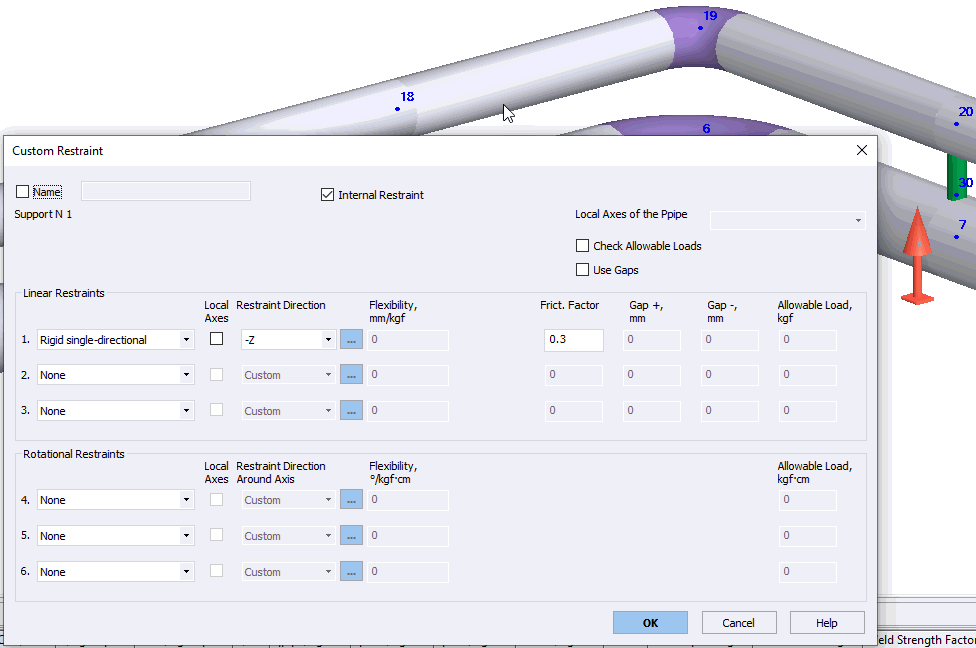

Read about START-PROF pipe stress analysis software
Different types of pipe to pipe connections could be modeled with help of internal restraint.
Example project file: PipeToPipeConnectionHanger.ctp
For example, we need to model the variable spring hanger, connected to another piping 15-18. The spring is placed in the upper point of hanger. In the bottom point the hanger is connected to pipe with hinge.
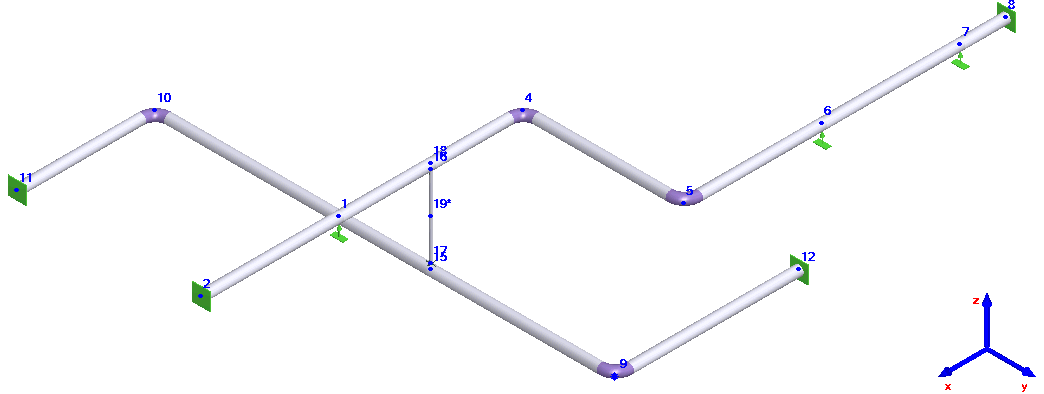
The tie could be modeled as pipe element:
Diameter should be equal to tie diameter
Wall thickness should be equal to half of tie diameter
Pressure should be zero
Test pressure should be very small (1e-5 kgf/cm2)
Operating temperature should be equal to Ambient temperature
Insulation and fluid weight should be zero
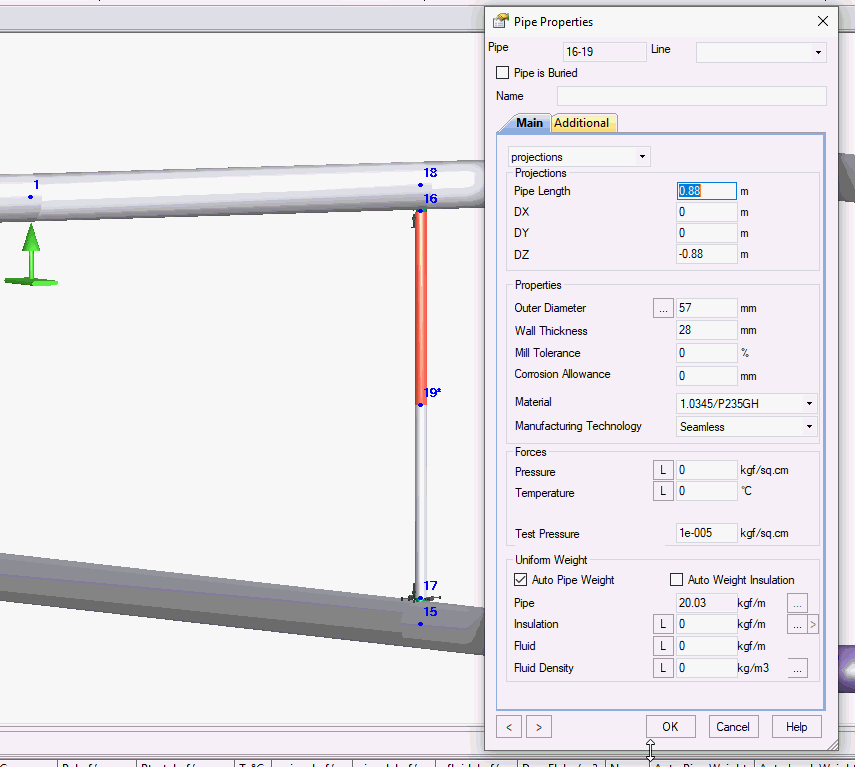
To model the hinged connection at the bottom of the tie we should add the internal restraint into the node 17 that is placed on the D/2 from 10-9 pipe axis. Linear restraints should be rigid, and angular restraints are absent.
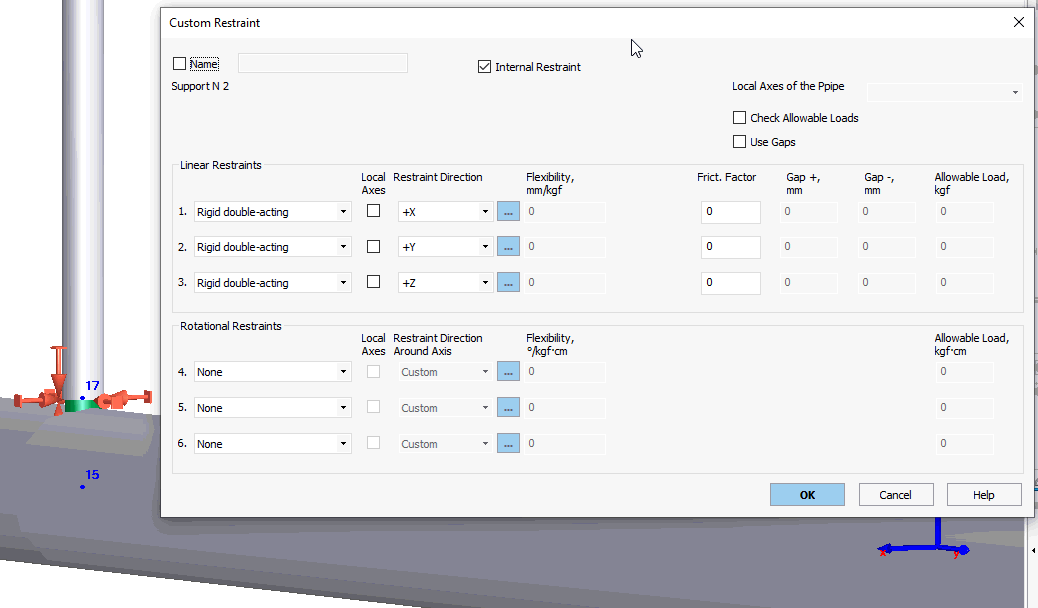
At the upper point we also place the internal restraint but with additional vertical elastic linear restraint that will model the spring flexibility.
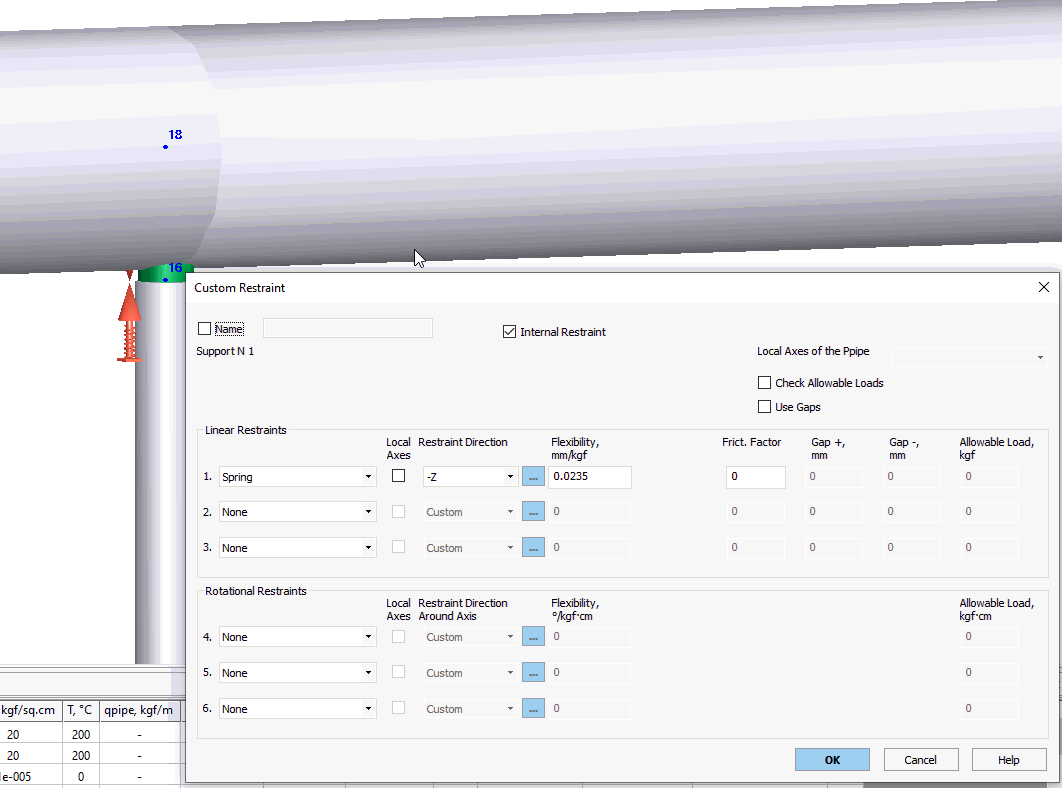
The spring tension could be adjusted by adding the cold spring anywhere along the tie length.
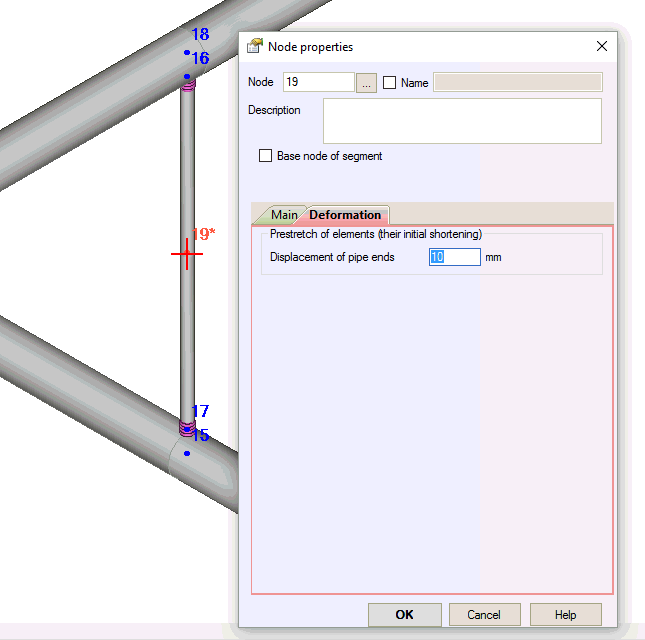
Example project file: PipeToPipeConnection.ctp
To model the pipe laying on another pipe with resting supports we need to place the jumpers between tho pipes in the points where the resting supports are placed.

Each support is modeled by rigid element. The internal restraint must be placed on the each rigid.
